Research team assesses environmental impact of organic solar cells
Study evaluates the manufacture, material use and performance of solar cell technology.
Sep 17th, 2010
Read more
Study evaluates the manufacture, material use and performance of solar cell technology.
Sep 17th, 2010
Read moreResearcher Pascal Jonkheijm of the MESA+ research institute at the University of Twente has won a 1.5 million Euros individual ERC Starting Grant. He will be using the grant over the next five years for research work creating artificial cell membranes on microchips so that, among other things, he can measure how living cells communicate with each other.
Sep 17th, 2010
Read moreThe California NanoSystems Institute (CNSI), UCLA and MESA+ Institute of Nanotechnology, University of Twente, signed a Memorandum of Agreement (MOU) on September 14th. This agreement unites two of the world's leading institutes of nanoscience and nanotechnology.
Sep 17th, 2010
Read more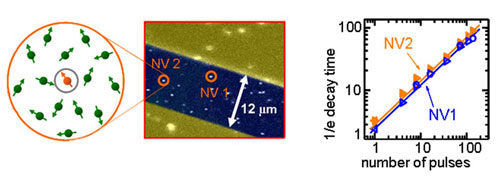 Team successfully decoupled a single quantum spin from its surroundings.
Team successfully decoupled a single quantum spin from its surroundings.
Sep 17th, 2010
Read more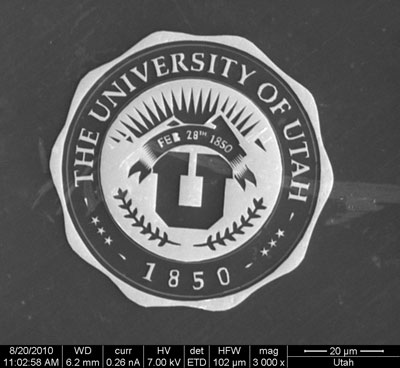 In an example of how a technology wonk displays school spirit, an engineer has created a golden University of Utah logo that is smaller than the width of an average human hair.
In an example of how a technology wonk displays school spirit, an engineer has created a golden University of Utah logo that is smaller than the width of an average human hair.
Sep 17th, 2010
Read moreThe Government of Lithuania and IBM today announced a joint research partnership in Lithuania that will enable research and development of nanotechnology, healthcare and intellectual property (IP) management innovations.
Sep 17th, 2010
Read more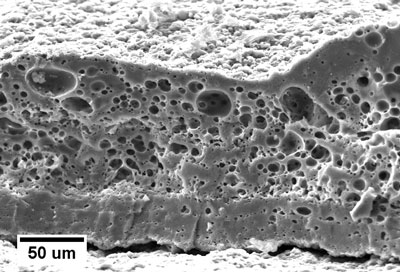 Am Institut fuer Fertigungstechnologie keramischer Bauteile an der Uni Stuttgart (IFKB) erforscht man neue Beschichtungsverfahren, bei denen Suspensionen mit Ueberschallgeschwindigkeit auf den Werkstoff aufgebracht werden. Auf diese Weise ist es zum Beispiel moeglich, extrem harte Schichten herzustellen, die eine sehr hohe Verschleissbestaendigkeit aufweisen.
Am Institut fuer Fertigungstechnologie keramischer Bauteile an der Uni Stuttgart (IFKB) erforscht man neue Beschichtungsverfahren, bei denen Suspensionen mit Ueberschallgeschwindigkeit auf den Werkstoff aufgebracht werden. Auf diese Weise ist es zum Beispiel moeglich, extrem harte Schichten herzustellen, die eine sehr hohe Verschleissbestaendigkeit aufweisen.
Sep 17th, 2010
Read moreAt UMass Lowell's 'Destination Nano' conference, government, business and academic leaders will determine how far nano has come and how far stakeholders must go to get nano-based products out of the laboratory and onto assembly lines.
Sep 17th, 2010
Read moreChina's science and technology could reach the average level of Western developed countries by the mid-century, but before that it still has a long way to go, a Russian expert told Xinhua in a recent interview.
Sep 17th, 2010
Read more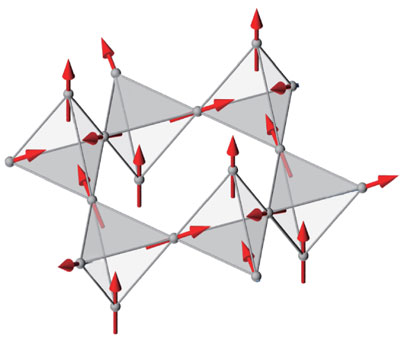 Experimentalists at The University of Tokyo have possibly discovered a new state of matter, called a 'chiral spin liquid' when they reported evidence of time-reversal symmetry breaking - a difference between the trajectory of a particle moving along one path or its inverse - in the oxide called Pr2Ir2O7.
Experimentalists at The University of Tokyo have possibly discovered a new state of matter, called a 'chiral spin liquid' when they reported evidence of time-reversal symmetry breaking - a difference between the trajectory of a particle moving along one path or its inverse - in the oxide called Pr2Ir2O7.
Sep 17th, 2010
Read more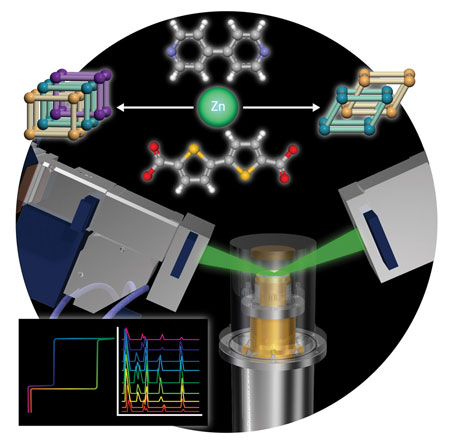 The degree of interconnectivity of molecular frameworks in microporous materials influences their structural flexibility and gas sorption.
The degree of interconnectivity of molecular frameworks in microporous materials influences their structural flexibility and gas sorption.
Sep 17th, 2010
Read moreCRAIC Technologies, the worlds leading innovator of UV-visible-NIR micro-analysis solutions, announces the formation of a Grant Preparation Assistance program for prospective purchasers of CRAIC Technologies microspectrophotometers and UV-visible-NIR microscopes.
Sep 17th, 2010
Read more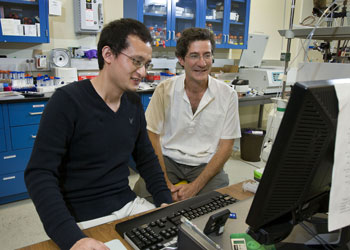 UCLA physicists have taken a significant step in controlling chemical reactions mechanically, an important advance in nanotechnology, UCLA physics professor Giovanni Zocchi and colleagues report.
UCLA physicists have taken a significant step in controlling chemical reactions mechanically, an important advance in nanotechnology, UCLA physics professor Giovanni Zocchi and colleagues report.
Sep 17th, 2010
Read moreResearchers at Boston College discovered that a cluster of carbon nanotubes coated with a thin layer of protein-recognizing polymer forms a biosensor capable of using electrochemical signals to detect minute amounts of proteins. This new biosensor could provide a crucial new diagnostic tool for the detection of cancer and other illnesses.
Sep 16th, 2010
Read moreScientists have developed a nano-sized vehicle with the ability to deliver chemotherapy drugs directly into cancer cells while avoiding interaction with healthy cells, increasing the efficiency of chemotherapeutic treatment while reducing its side effects.
Sep 16th, 2010
Read moreResearchers at North Carolina State University have developed a method for predicting the ways that nanoparticles will interact with biological systems - including the human body. Their work could have implications for improved human and environmental safety in the handling of nanomaterials, as well as applications for drug delivery.
Sep 16th, 2010
Read more